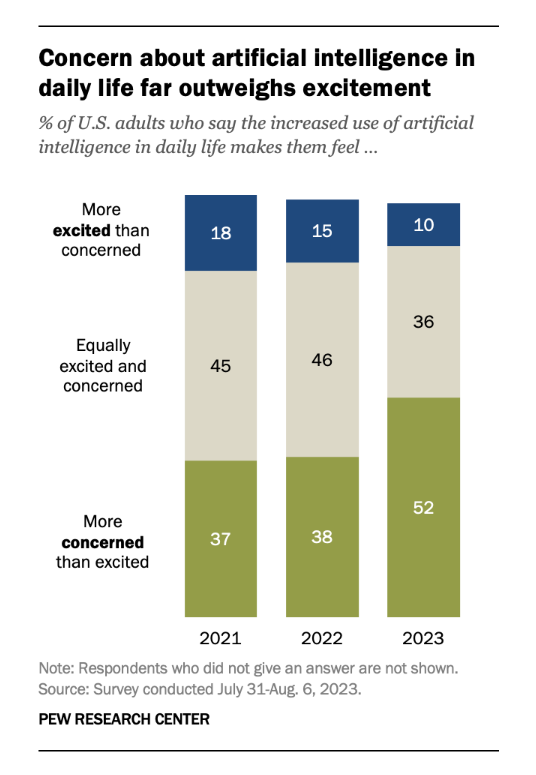#2 How AI Regulations Can Differ by Disciplines

Recent surveys indicate a growing concern among Americans about the unchecked development of AI, with many advocating for robust regulatory frameworks. However, when it comes to what these regulations should look like, opinions vary widely—often influenced by one’s field of study. As a doctoral student in science and technology policy at Georgia Tech, a STEM-intensive institution, I’ve observed firsthand the differences in how social sciences and STEM fields approach AI regulation. These observations come from my experiences TA-ing ethics courses for engineers and engaging in discussions with AI professionals.

Focus
First, it's clear that value-laden decision-making, which is at the heart of regulatory discourse, is interpreted differently across disciplines. For instance, when I introduced the famous Trolley problem in a class discussion, my goal was to help engineering students appreciate the complexities of ethical dilemmas. Given that most of these decisions don't have straightforward answers, I expected a vigorous debate but no definitive solutions. However, after some discussion, many students presented their own solutions, complete with justifications. This was surprising to me as a social science researcher because I didn’t expect the students to arrive at solutions. However, it turned out to be a valuable opportunity to observe the differences in approach. For engineering students, questions often demand answers, regardless of their complexity. This highlights how perspectives on AI regulation can vary significantly between fields.
Technological Boundaries
Another example shows differences in technological boundaries in terms of AI. When I talk about autonomous vehicles (AVs), what I have in mind is a vehicle that moves smoothly with no one in the driver’s seat. On the other hand, when I asked about regulatory considerations regarding AVs, computer science students talked about computer vision algorithms that can read damaged signs properly whereas an electronic engineering student brought up issues with sensors differentiating living and non-living objectives. It was a wow moment for me because I could finally understand the difficulties of engineering students when they try to accommodate ethical/regulatory issues in their research.
It is easier to consider social impacts and ways to negate negative effects if we see a final product and can easily imagine how the product is used in our lives. However, imagining the technology from a development perspective requires a deep understanding of the intricate details that go into creating such products. This is particularly challenging because developers must anticipate a myriad of potential real-world issues that could arise, from the technical challenges of ensuring reliable sensor performance in diverse environmental conditions to the ethical concerns of decision-making in unpredictable scenarios. These insights highlight the importance of interdisciplinary collaboration in the field of AI, as it brings together different perspectives and expertise.
Expectations
Finally, expectations from AI ethics/regulation courses in social sciences and STEM fields are quite different. Upon examining several AI ethics syllabi from various institutions, it became apparent that their educational goals are not uniform. Courses in social science fields such as public policy or political science emphasize understanding the social impacts of technology, heavily grounded in theoretical and philosophical perspectives. In contrast, STEM-oriented courses tend to focus on the practical applications of AI regulations, such as system development and evaluation. This divergence naturally reflects the distinct nature of each academic discipline, offering students the flexibility to pursue courses aligned with their interests. However, a significant challenge arises from the fact that these courses are not mandatory. At institutions like Georgia Tech, undergraduates can choose from humanities, fine arts, or ethics courses to satisfy non-STEM requirements. While some students select ethics courses to augment their research or enhance their resumes, others may choose based on schedule convenience alone.
This situation is particularly frustrating for those like me who want to commit to imparting comprehensive knowledge and philosophical insights to STEM students through interdisciplinary education. Because those courses seem to provide minimum ethical/regulatory understanding to consider when developers build a system, it would be hard to deliberate over the regulation-related part if someone has no opportunity to get exposed to those classes. I’m not advocating for mandatory ethics courses for all STEM students, but I am highlighting a crucial point: if the urgency and significance of AI regulation are acknowledged, then those involved in the technology’s development and deployment must be given ample opportunity to thoroughly contemplate these issues. This is essential for fostering a well-rounded understanding that goes beyond mere technical proficiency.
Despite these discrepancies, the need for enhanced communication and collaboration between STEM and non-STEM disciplines becomes ever more critical. This interdisciplinary exchange is essential, not only in professional settings but starting from the educational foundations at institutions like Georgia Tech. By fostering a culture of collaboration early in academic careers, we can equip future researchers and practitioners with the comprehensive tools needed to tackle AI challenges holistically. Schools must become crucibles for this integrated learning, where diverse viewpoints intersect to forge innovative pathways in AI ethics and regulation. Only through such collaborative efforts can we ensure that the next generation of professionals is prepared to address the intricate issues of AI with both technical acuity and ethical insight.
Author

— by Eunji Emily Kim, MS, MA, doctoral student in the School of Public Policy at Georgia Institute of Technology, 9/2024
Continue the conversation! Please email us your comments to post on this blog. Enter the blog post # in your email Subject.